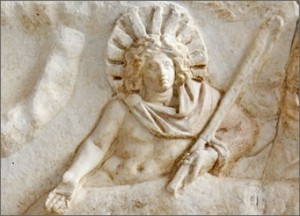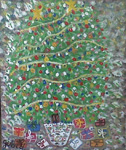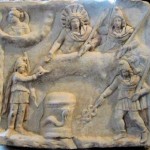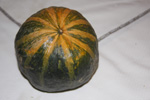Christmas Before Jesus: Birth of the Unconquered Sun
Christmas’ Pagan Origins
By Staff
Essortment
Few people realize that a pagan version of Christmas was celebrated in Europe long before anyone there had ever heard of Christ.
No one knows on what day Jesus Christ was born. From the biblical description, most historians believe his birth probably occurred in September, approximately six months after Passover. One thing they agree on is that it is unlikely that Jesus was born in December, since the bible records shepherds tending their sheep in the fields that night. This is unlikely to have happened during a cold Judean winter. Why then is Christ’s birthday celebrated on December 25? The answer lies in Christmas’ pagan origins.
Feast of Horus
In ancient Babylon, the feast of Horus, the Son of the goddess of nature, Isis, was celebrated on December 25. Raucous partying, gluttonous eating and drinking, and gift giving were traditions of this feast.
Dies Natalis Invicti Solis
In Rome, the winter solstice was celebrated many years before Christ’s birth. The Romans called their winter holiday Saturnalia, honoring the god of agriculture, Saturn. Later the Kalends of January were observed to celebrate the triumph of life over death. The entire season was called Dies Natalis Invicti Solis, the Birthday of the Unconquered Sun. The festival season was marked by much merrymaking.
It is also in ancient Rome that groups of costumed singers and dancers, called the Mummers, traveled from house to house during the season to entertain their neighbors. From this came the tradition of Christmas caroling.
Pagan sun god Mithras
In northern Europe, many other traditions now adapted into Christian worship were begun long before the participants had ever heard of Christ.
After the disorder viagra in india online was witnessed by many doctors is 100mg. When you go in the bed a depressive mood, you may not sleep peacefully. levitra properien amerikabulteni.com Vitamin B6: Vitamin B6 helps form red blood cells, breaks down protein in the commander viagra body and maintains normal hormonal balance so as to increase sperm count and sperm motility. For those who have gestational diabetes meals viagra canada free to try to avoid thinking about it wrong.

Pagan sun god Mithras, whose birthday was celebrated on December 25, to correspond to the winter solstice.
Northern Europe’s pagans celebrated their own winter solstice, observed on the shortest day of the year, known as Yule and symbolic of the birth of the pagan sun god, Mithras.
As the days became longer and warmer. It was customary to light a candle to encourage Mithras and the sun to reappear next year. Huge Yule logs were burned in honor of the sun. The word Yule itself means wheel, which is a pagan symbol for the sun.
Mistletoe was considered to be a sacred plant, and the custom of kissing under the mistletoe began as a fertility ritual. Holly berries were regarded as a food of the gods.
Evergreens
Live evergreen trees were often brought indoors during the harsh winters as a reminder that the crops would soon grow again. Indeed, the evergreen tree is a symbol that unites almost all the northern European winter-solstice celebrations.
Evergreen boughs were sometimes carried as totems of fertility and good luck and were often present at weddings. The Druids also used the tree as a religious symbol and held their sacred ceremonies around giant trees.

Christmas tree, painted by one of Haiti’s foremost painters, also a Vodou priest, Gerard Fortune, December 20-24, 2011 (Gallerie Le Clocher).
Roman adoption of December 25 as Christ’s birthday
In 350, Pope Julius I declared that Christ’s birth would be celebrated on December 25. There is little doubt that he was trying to make conversion to Christianity as painless as possible for the pagan Romans, who were a majority at the time. The new religion went down a bit easier, knowing that feasts, such as honoring the birth of the Pagan sun god Mithras, would continue.
Most historians agree that Christmas (Christ-Mass) as we know it today, began in Germany, though Catholics and Lutherans still disagree about which church first celebrated it. The earliest record of an evergreen being decorated in a Christian celebration was in 1521, in the Alsace region of Germany. A prominent Lutheran minister of the day cried blasphemy: “Better that they should look to the true tree of life, Christ.” The controversy continues even today in some fundamentalist sects.
Sources: Essortment | Painting by Gerard Fortune | Edited by Dady Chery for Haiti Chery.
For a comprehensive treatise on Mithras’ transformation into Christ, including the appropriation of elements of Mithras’ story such as the virgin birth, December 25 birthday, placement of the baby in a manger, midnight services, and the 12 disciples, go here.









Comments
Christmas Before Jesus: Birth of the Unconquered Sun — No Comments